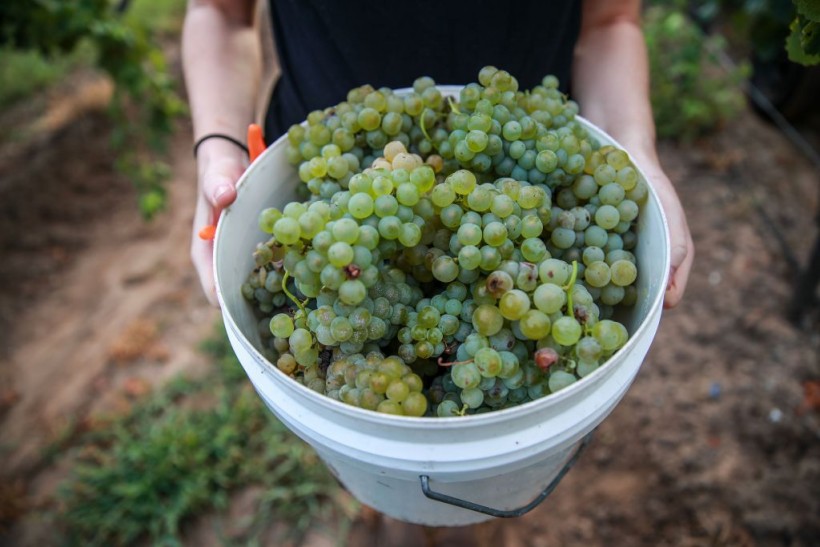If global temperatures rise by more than 2°C over the preindustrial norm, 70% of the world's winegrowing regions may become unfit for grape production.
This figure comes from a recent study published in Nature Reviews Earth and Environment, which combined decades of research into the possible impact of climate change on viticulture.
Threats To Wine Regions
Viticulture, or grapevine-related agriculture, is a thousand-year-old technique found in practically every region and climate in the world. Grape growing, wine production, and consumption have become inextricably linked to cultural identities and the economy.
Grape producers have spent years working out how to best grow grapes and produce wine in various locations, concentrating on a few vine types that grow exceptionally well there.
However, vineyards in each region face unique challenges, such as extreme weather and disease, making it more difficult to grow and produce wine.
As human-caused climate change warms the planet, modifies weather patterns, exacerbates drought, and intensifies extreme weather, many vineyards will be pushed to or beyond their boundaries.
"The regions that are most threatened are regions that are already hot and dry because those regions are likely to get both hotter and drier," said Gregory Gambetta, a viticulturist at the Université de Bordeaux in France and a coauthor on the study.
Gambetta and his colleagues sifted through current studies to compile a report on how worldwide winemaking regions will do under moderate and extreme climate change scenarios, what the key challenges will be, and how each region may adapt to the impending hazards.
The researchers discovered that if global warming exceeds 2°C above the preindustrial norm, approximately 29% of present wine regions may face climate conditions too harsh to cultivate grapes. An extra 41% may become unfit for viticulture if growers are unable to adjust their methods. The introduction of new, suitable growth zones would not compensate for the losses.
Up to 90% of winemaking regions in Greece, Italy, Southern California, and Spain may perish by the end of the century.
Most places will likely experience extreme heat and water scarcity. Climate change will exacerbate bad grape-growing conditions over the world, making hotter, dryer, and stormier.
Grapevine diseases and pests are projected to increase in prevalence, but their dispersal is increasingly difficult to forecast.
Read Also: Climate Change Set to Affect Vineyards by 2050
Suitability
Gambetta explained that just because an area becomes less ideal for viticulture does not mean grapes cannot be grown there. Suitability is more of a spectrum.
A loss of appropriateness indicates that more effort and resources are required to make grape cultivation viable and fruitful.
This could entail importing or enhancing irrigation, as well as excavating steppes into slopes to thrive at warmer temperatures. Viticulturists could use modular shades during peak UV radiation periods or spray vines with pesticides to prevent pests and illnesses.
They could change vineyard management to make better use of limited water, address nutritional shortages in the soil, or grow cover crops to manage the soil's carbon.
Adapting to climate change may also include relocating wine production to more suitable places or diversifying grape varietals to include those that will be simpler to produce in future climate circumstances.
However, places that may one day be suited for wine production may currently be used for other crops, grazing land, or the preservation of wild habitats. The researchers stated that in such instances, wine production must be balanced with acceptable environmental stewardship.
"We're starting with a crop that is pretty robust and adaptable. Suitability in the future is not a black-and-white thing. There's room for adaptation," Gambetta said.
Related Article: Wine-Friendy Poop! Bluebird Feces Key to Healthy Vineyards in California
© 2024 NatureWorldNews.com All rights reserved. Do not reproduce without permission.



![Venomous Centipede Could be Game-Changer and Save Lives of People with Kidney Disease [Study]](https://1471793142.rsc.cdn77.org/data/thumbs/full/70407/280/157/50/40/venomous-centipede-could-be-game-changer-and-save-lives-of-people-with-kidney-disease-study.jpg)
![Plastic Pollution: Scientists Include Spores of Plastic-Eating Bacteria ‘Bacillus Subtilis’ to Develop 'Self-Digesting Plastic' [Study]](https://1471793142.rsc.cdn77.org/data/thumbs/full/70396/280/157/50/40/plastic-pollution-scientists-include-spores-of-plastic-eating-bacteria-bacillus-subtilis-to-develop-self-digesting-plastic-study.jpg)

